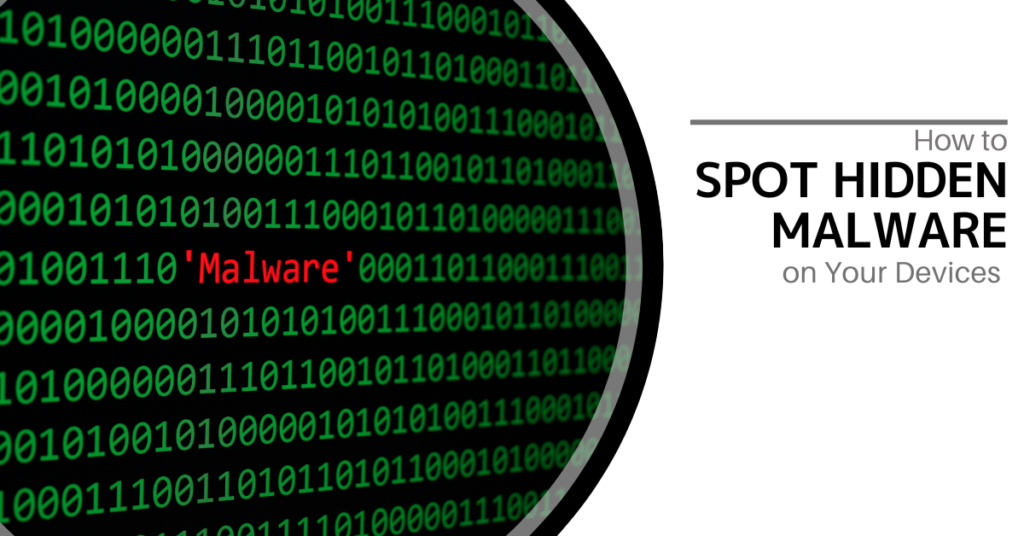|
Getting your Trinity Audio player ready...
|

Malware can cause serious problems for smartphones, tablets, and computers. It can slow down your system, steal private data, and monitor your actions without your consent. This guide will help you recognize hidden threats and show you how to respond effectively.
What Is Malware?
The word malware comes from “malicious software.” It refers to any program designed to harm, exploit, or disable devices and networks. Cybercriminals use it to steal data, interrupt operations, and access information without permission.
There are several categories of malware, each with its own method of causing damage.
Types of Malware
Virus Programs
Viruses are among the oldest forms of malware. They attach to files and spread between systems, leading to data loss and slow device performance.
Trojans (Disguised Threats)
Trojans appear to be useful programs but cause harm once installed. They often focus on stealing passwords and sensitive information.
Ransomware
This variant locks your files and demands payment to unlock them. Without proper precautions, it can result in major financial loss.
How Threats Reach Your Device
Hackers use multiple tactics to install malware without your knowledge.
- Risky Downloads
Downloading files from untrusted sources can introduce harmful programs. Always verify downloads before proceeding. - Unsecure Websites
Some websites install malware automatically when visited. Avoid suspicious or unfamiliar pages. - Phishing Emails
Emails with infected attachments or links are a common method of delivery. Even one click can compromise your system.
Signs You May Be Infected
Some forms of malware operate silently, so it’s important to stay alert for warning signs:
- System Slowdowns
Unexplained lag or delayed responses might indicate malicious processes running in the background. - Pop-Ups and Ads
Frequent, unwanted pop-ups may suggest that a program is trying to take over your browser or system. - Unusual Data Usage
If your mobile or Wi-Fi data use spikes unexpectedly, something may be sending or receiving data behind the scenes.
How to Detect Malware
Use the steps below to identify harmful software:
- Install Trusted Antivirus Software
A reliable security program can find and remove most types of malware effectively. - Review Installed Apps
If you notice apps you didn’t install or don’t recognize, remove them immediately. - Check Active Processes
Use your device’s task manager to look for suspicious tasks. Many threats use unfamiliar file names to hide. - Inspect Browser Extensions
Unknown add-ons in your browser could be a sign of infection. Disable or delete anything you don’t remember installing.
What to Do If You’re Infected
Taking quick action can prevent long-term damage:
- Run a Full Scan
Use your antivirus software to check the entire system for malware. - Update Everything
Install all available updates for your operating system and applications to close security gaps. - Change Your Passwords
Update login credentials for your email, banking, and social media accounts as soon as possible. - Back Up Important Files
Save essential data to external drives or cloud storage in case you need to reset your system.
How to Prevent Future Attacks
Preventing malware starts with good digital habits:
- Keep Everything Up to Date
New updates often include patches for security vulnerabilities that malware can exploit. - Avoid Clicking Suspicious Links
Never click links or attachments from unknown sources. - Use Strong Passwords
Complex, unique passwords for each account reduce your vulnerability to attacks. - Enable Real-Time Protection
Make sure your antivirus software is always running and set to scan regularly.
Stay Secure in a Digital World
Digital security is essential for both individuals and businesses. With the right knowledge and tools, it’s possible to reduce the risks posed by malware. Stay alert, stay protected, and if you ever feel unsure about your device’s safety, don’t hesitate to seek help. Protecting your devices is protecting your privacy.aining privacy. While malware presents significant risks it is possible to mitigate its impact when one remains alert and aware.
If you require assistance with security precautions feel free to ask. Digital safety requires proper protection.
Twintel has grown into an expansive, full team of IT services professionals, acting as the outsourced IT department of non-profits, small to mid-size businesses, and enterprise-level corporations in Orange County, across California, and nationally.
Today, it’s the strength and deep expertise of the Twintel team that drives positive outcomes for clients. Each of the support staff, technicians, and engineers works diligently each day to make sure that the companies served have the seamless, secure, and stable IT environments needed to allow them to pursue their organizational objectives.